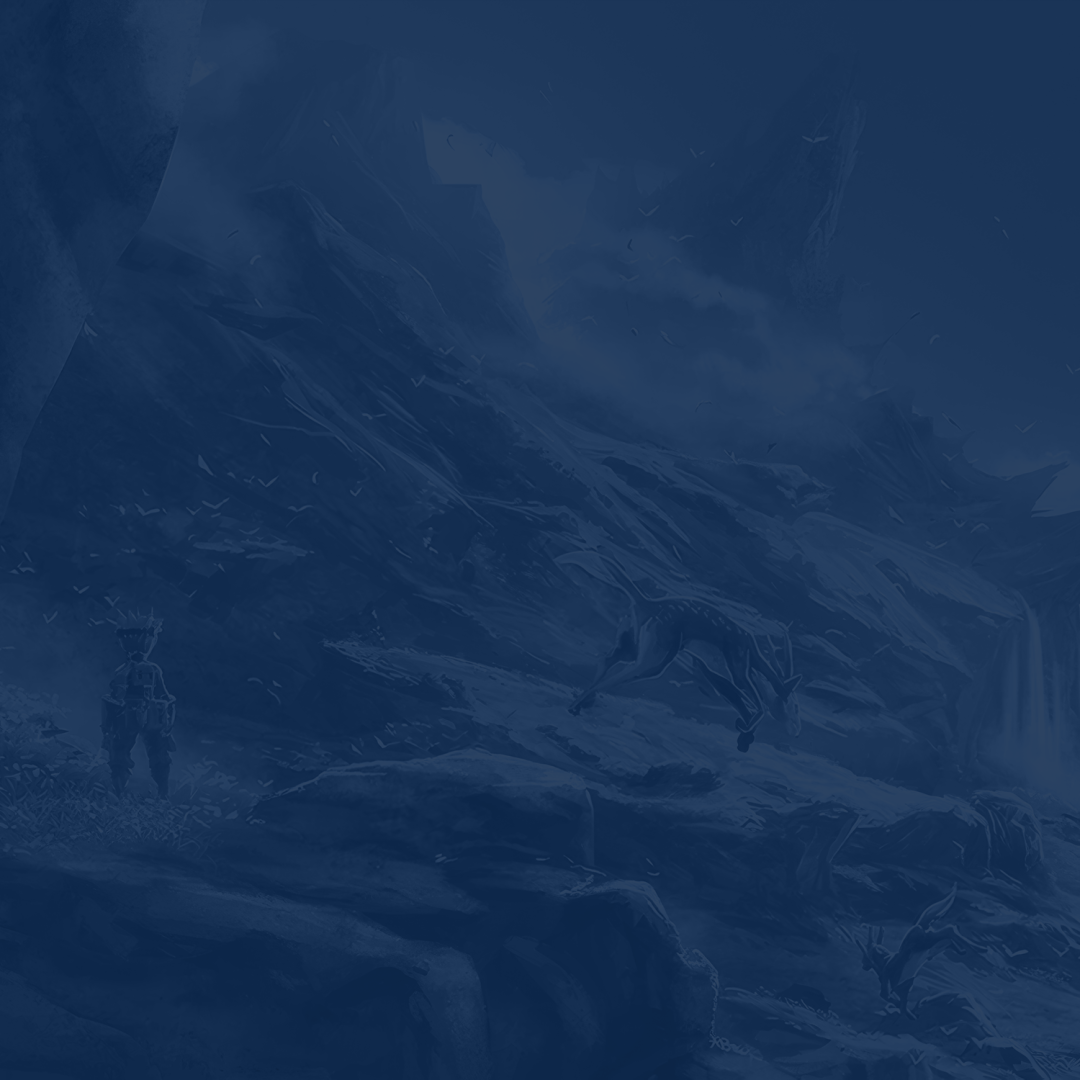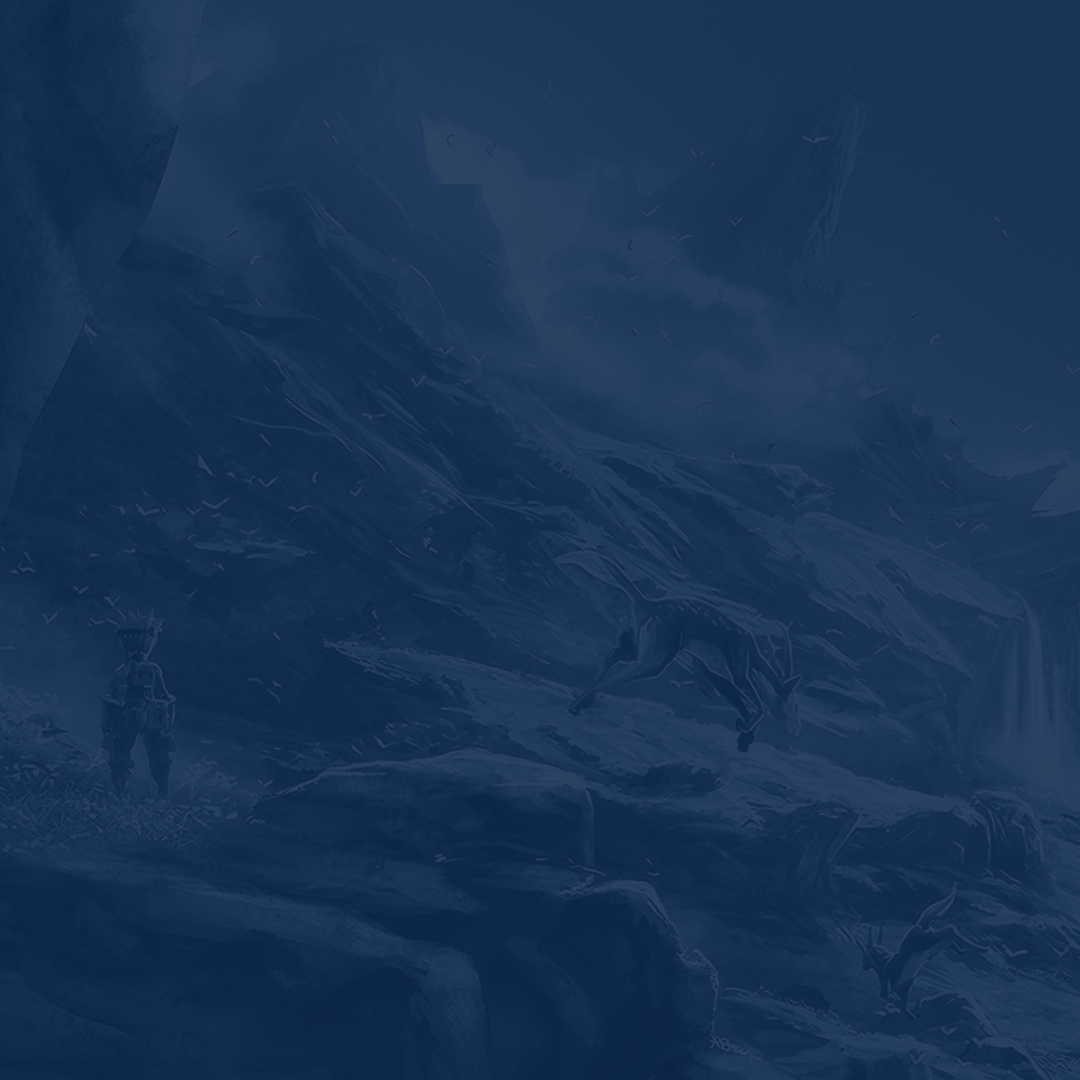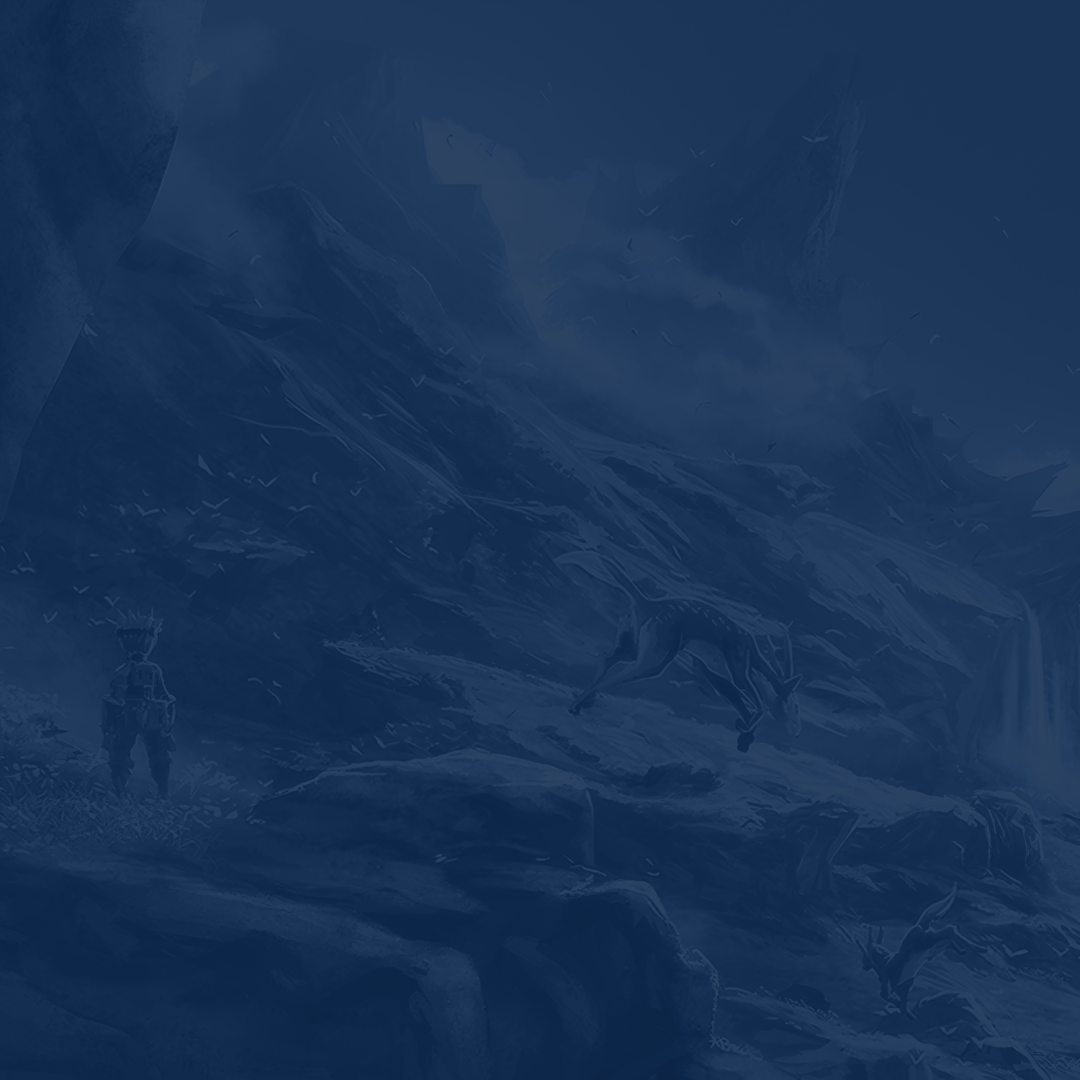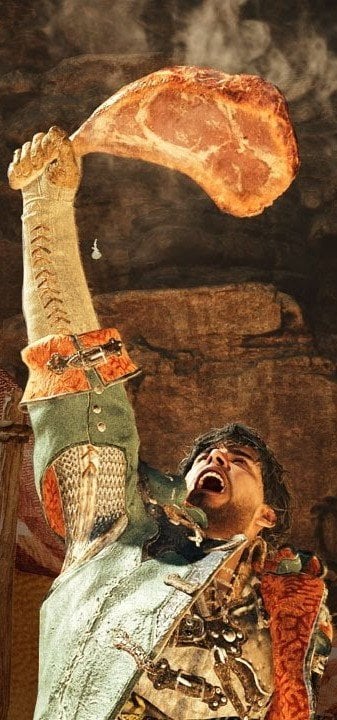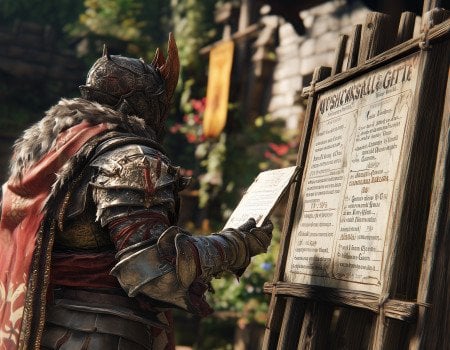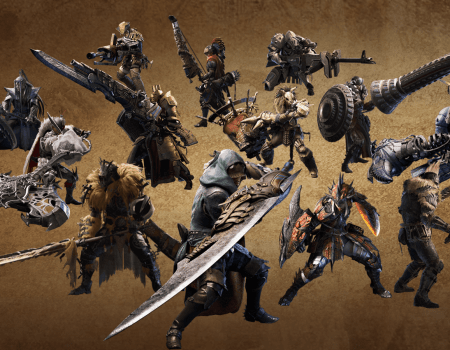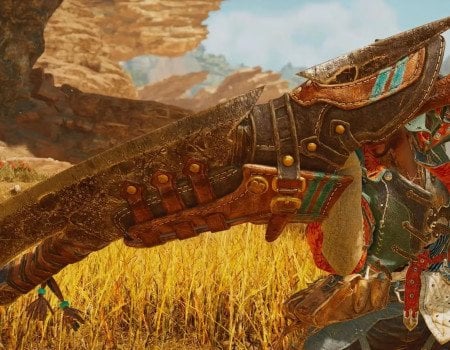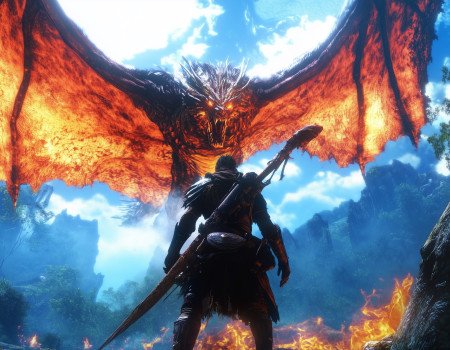Welcome to the Monster Hunter Wilds cooking guide, Hunters! In this guide we’ll explain how the cooking system works, why it’s important to make meals before each hunt, and what benefits you’re going to get out of it. Cooking has been one of the signature features of Monster Hunter games for a long time now, and in Wilds, it’s become both more streamlined and more complex.
If you would like to get access to more advanced cooking ingredients and dishes or just need some help getting to the endgame, Buy Monster Hunter Wilds Campaign Boost at Skycoach. This is the fastest and safest way to unlock in-game content if you don't have too much free time.
Read other articles:
Note: At Skycoach, you can Buy Monster Hunter Wilds Boost at the best prices with fast delivery. Use our special PROMO CODE (in green) hidden in this article for a 20% DISCOUNT.
Monster Hunter Wilds Cooking Explained
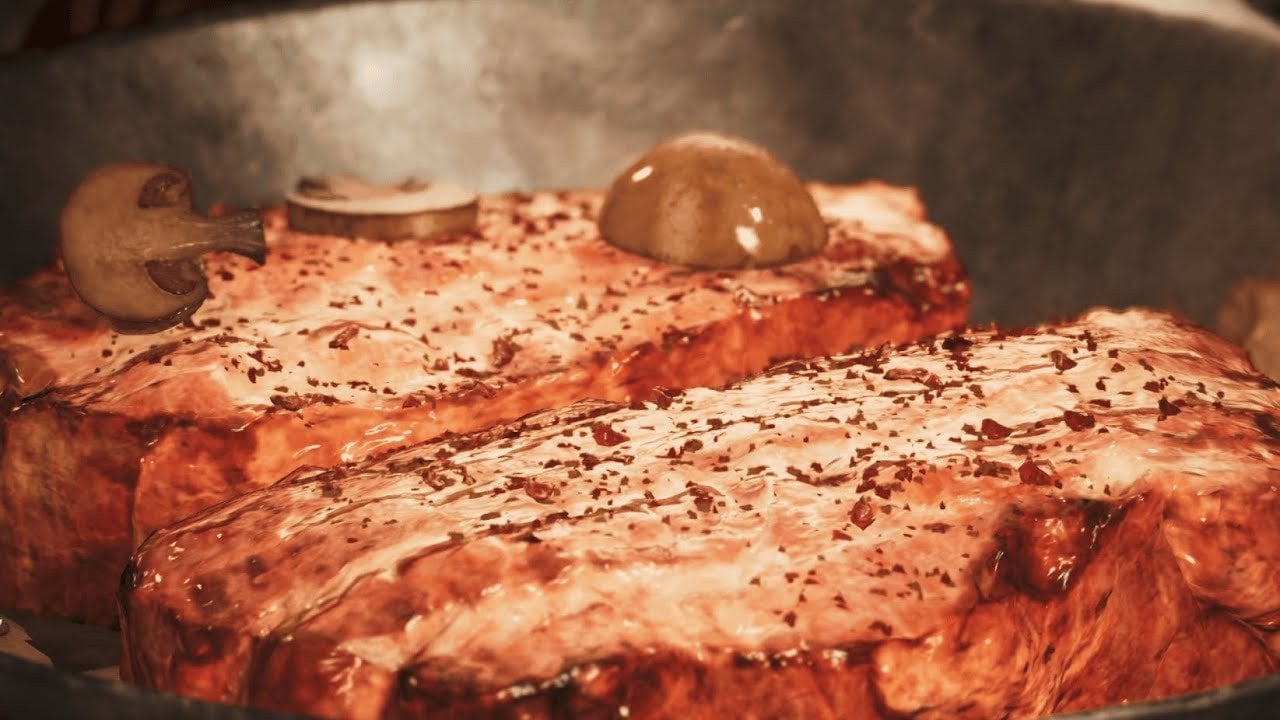
Cooking meals is a way to receive temporary boosts for your hunter or your Palico. This is done by combining various ingredients that increase specific stats and additionally have a chance to trigger a skill. So, not only will you be able to increase your max health and stamina by half of your current stats, but you also have the opportunity to add more skills that might be missing on your currently equipped gear. Needless to say, increasing your health and stamina is just about the most important thing you can do before another hunt. It’s to learn Monster Hunter Wilds how to cook!
First of all, there are two types of cooking in Monster Hunter Wilds:
- Grill a Meal – lets you combine up to 3 ingredients to create any combination of buffs.
- Grill Meat – lets you grill raw meat to create consumable items through a mini-game that increases your stamina during your adventures.
Both things can be done either from a camp or from using a BBQ Grill that you can use anywhere (almost!)
Cooking 101: Grill a Meal
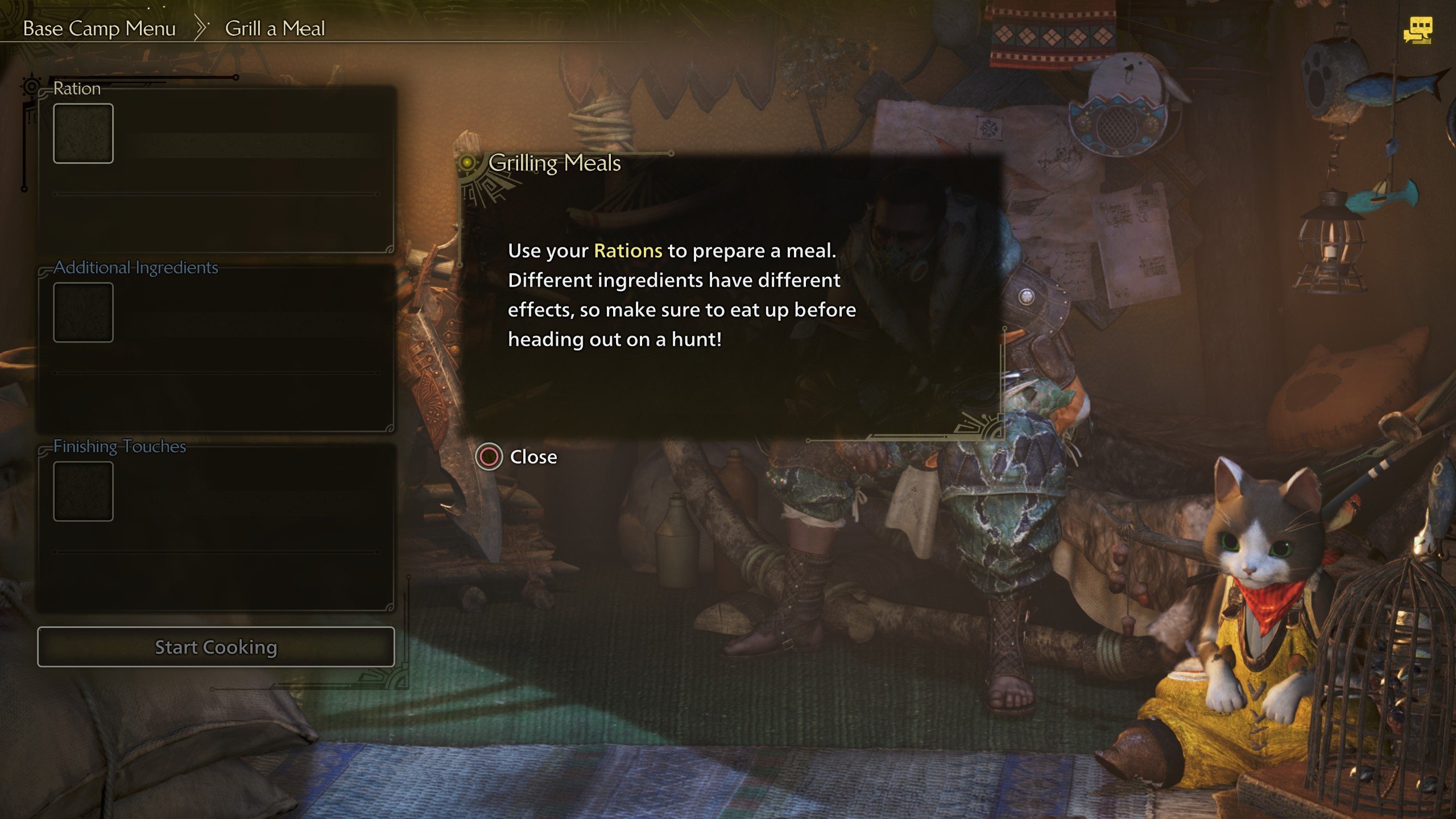
Monster Hunter Wilds food buffs come from meals that consist of 3 ingredients:
- Ration – the core element of a meal. Different ingredients have different effects, so make sure to read what each one adds!
- Additional Ingredients – is the second element. Their bonuses increase the efficacy, extend the length of Meal Effects, and activate Food Skills.
- Finishing Touches – the final element of a meal that further increases the Meal Effects.
Select the ingredient for each of 3 of these slots, and you’ll make a unique meal that provides the sum of individual bonuses from each ingredient you used. Normally, the Meal Effects last 30 minutes, but with the addition of specific ingredients, this duration can be extended to 50 minutes if you so desire.
Grilling a Meal also has 3 menu options:
1. Recommended Meal – offers a meal with pre-determined ingredients.
a. Cook Only with Rations – uses only the first ingredient that just increases health and stamina.
2. Custom Meal – lets you create your own meal by combining ingredients. BLOG20
3. Favorite Meals – allows you to save and cook your favorite combinations of ingredients.
You can save up to 40 custom Monster Hunter Wilds cooking recipes! And it's way more efficient than hand-picking 3 ingredients each time.
Cooking 101: Grill Meat
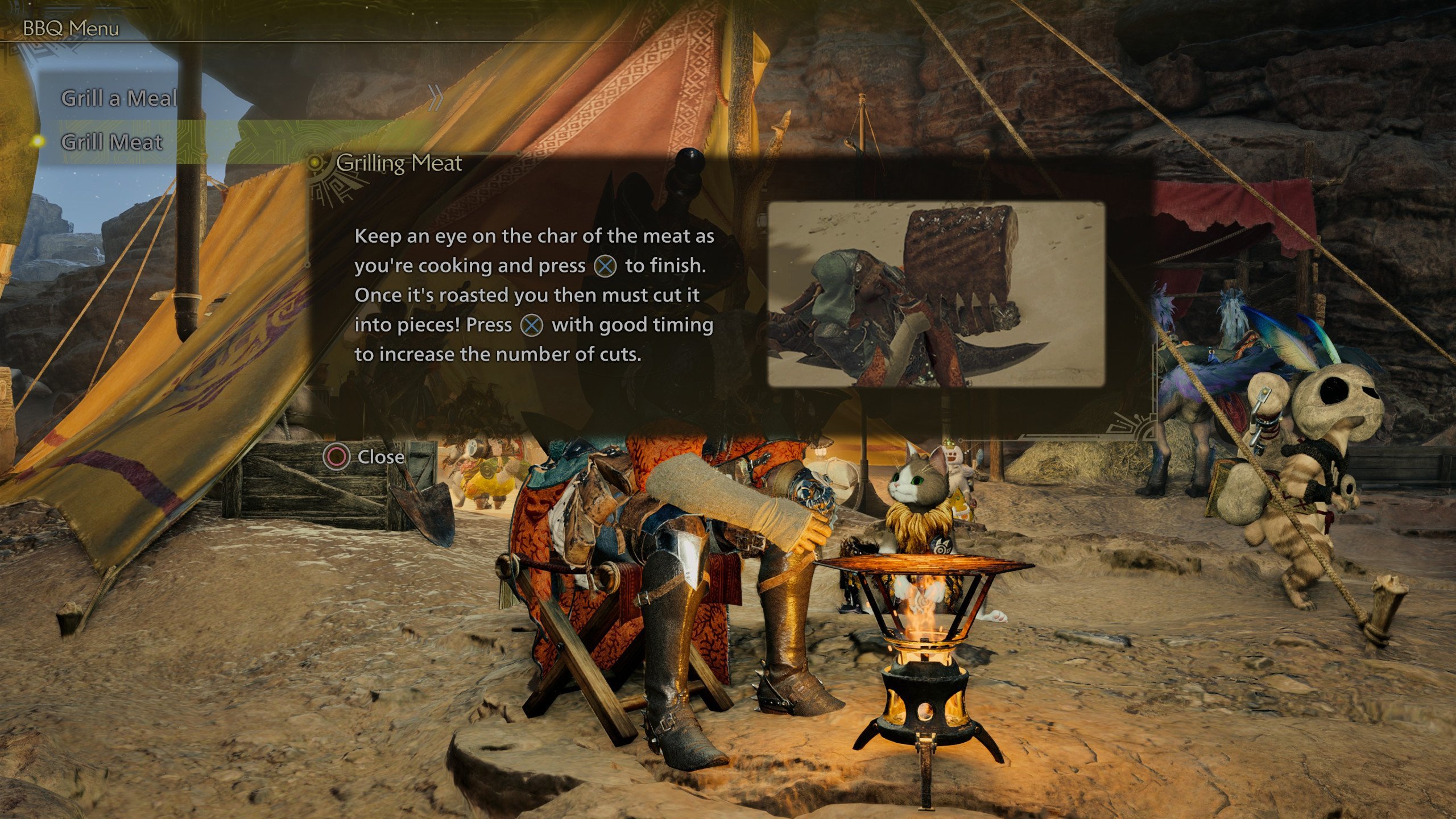
In this mini-game, you can grill raw meat to create Steaks. Based on your success in this mini-game, you can make:
- Raw Steak – increases your Stamina by 25%
- Well-done Steak – increases your Stamina by 50%
The mini-game works by first pulling out a huge chunk of meat from the ribs and frying it over the fire. Here, you need to watch how the meat changes color. YOu need to wait long enough to get that perfect color but not long enough to make it charred.
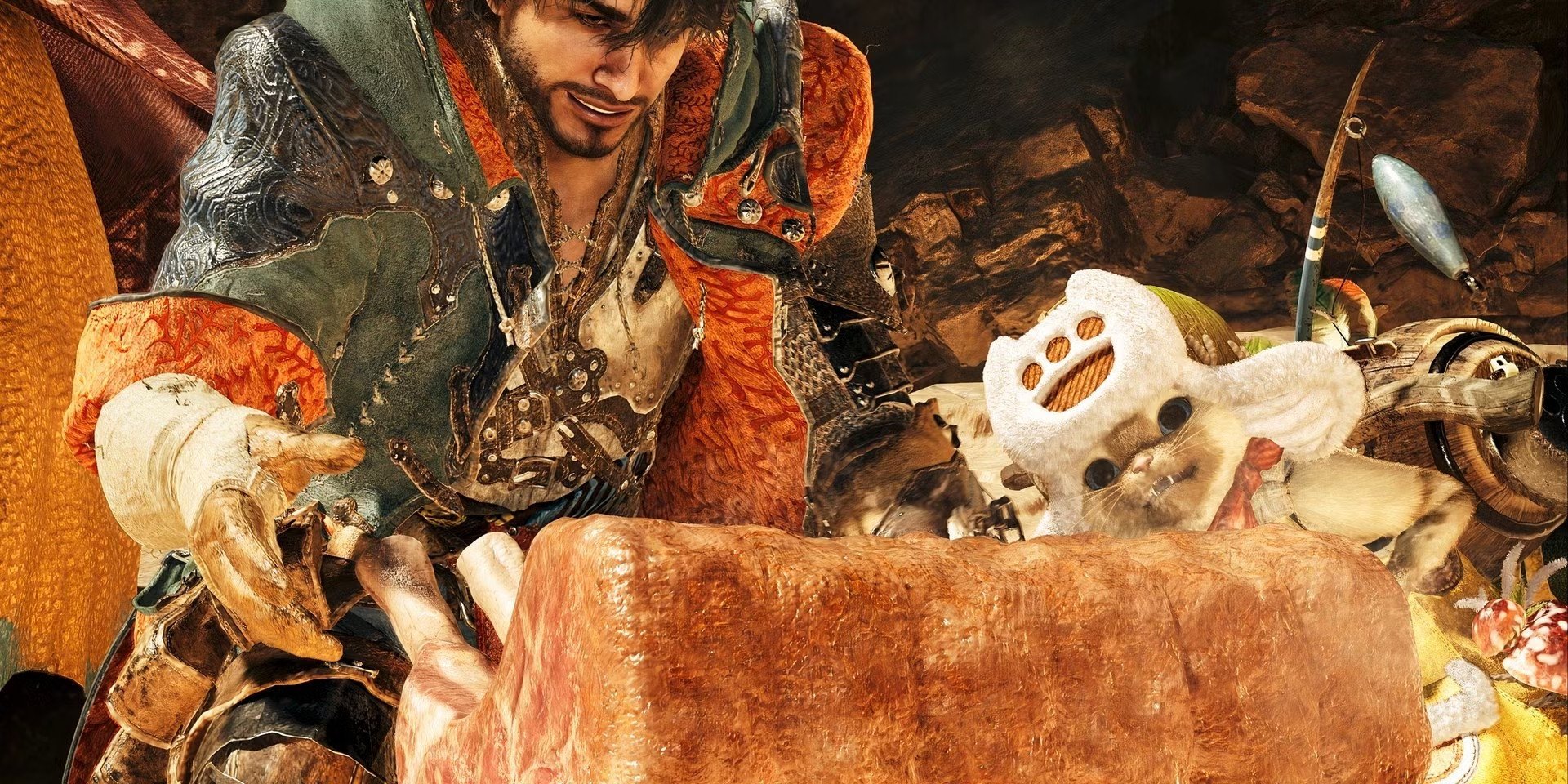
In the second part of the mini-game, you must cut the meat into pieces by following a specific tempo. Listen to the melody and press the button at the right moment. If you hit the button correctly five times in a row, you’ll hear a “TASTY!” which will tell you that your attempt was flawless. As a reward, you’ll get 12 Well-done stakes. Not hitting the button all 5 times will result in fewer Well-done Stakes. So, it’s not that important to do everything perfectly.
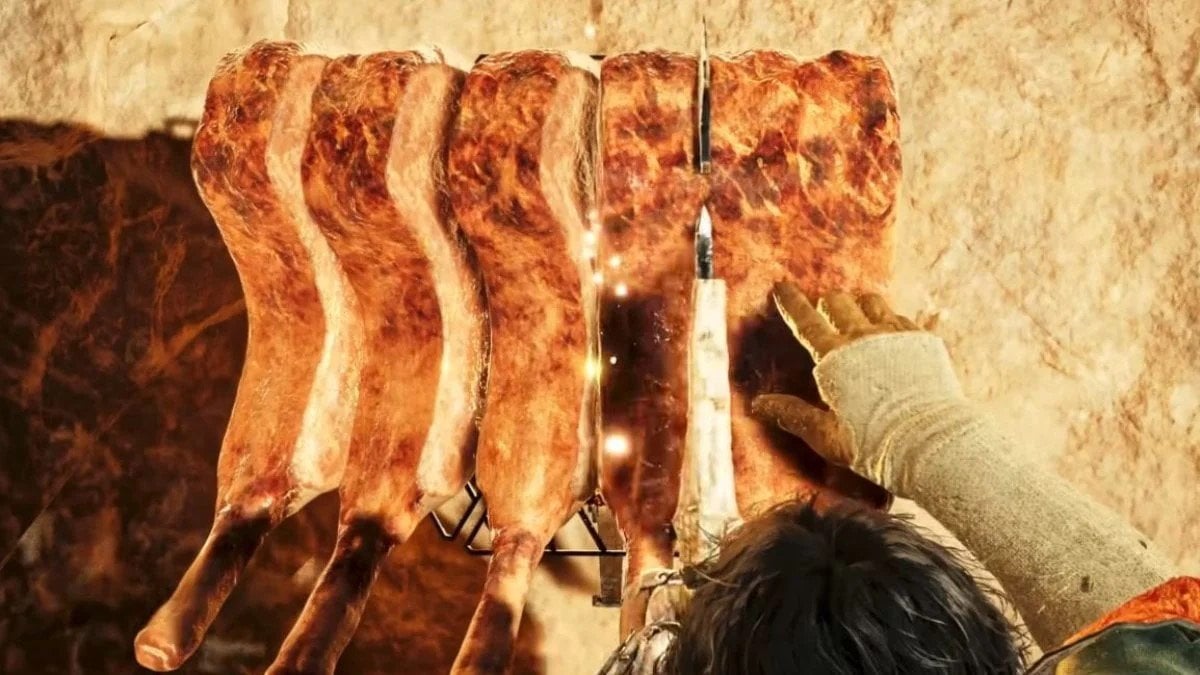
Now, you should make sure that your steaks are on the quick bar menu so you can use them at any time.
It’s important to have steaks with you because the longer you don’t visit a camp, the more stamina you will lose over time. Being knocked out by monsters also depletes the max stamina, but a quick bite of a Steak will remove these negative effects!
Village Feasts vs. Field Cooking
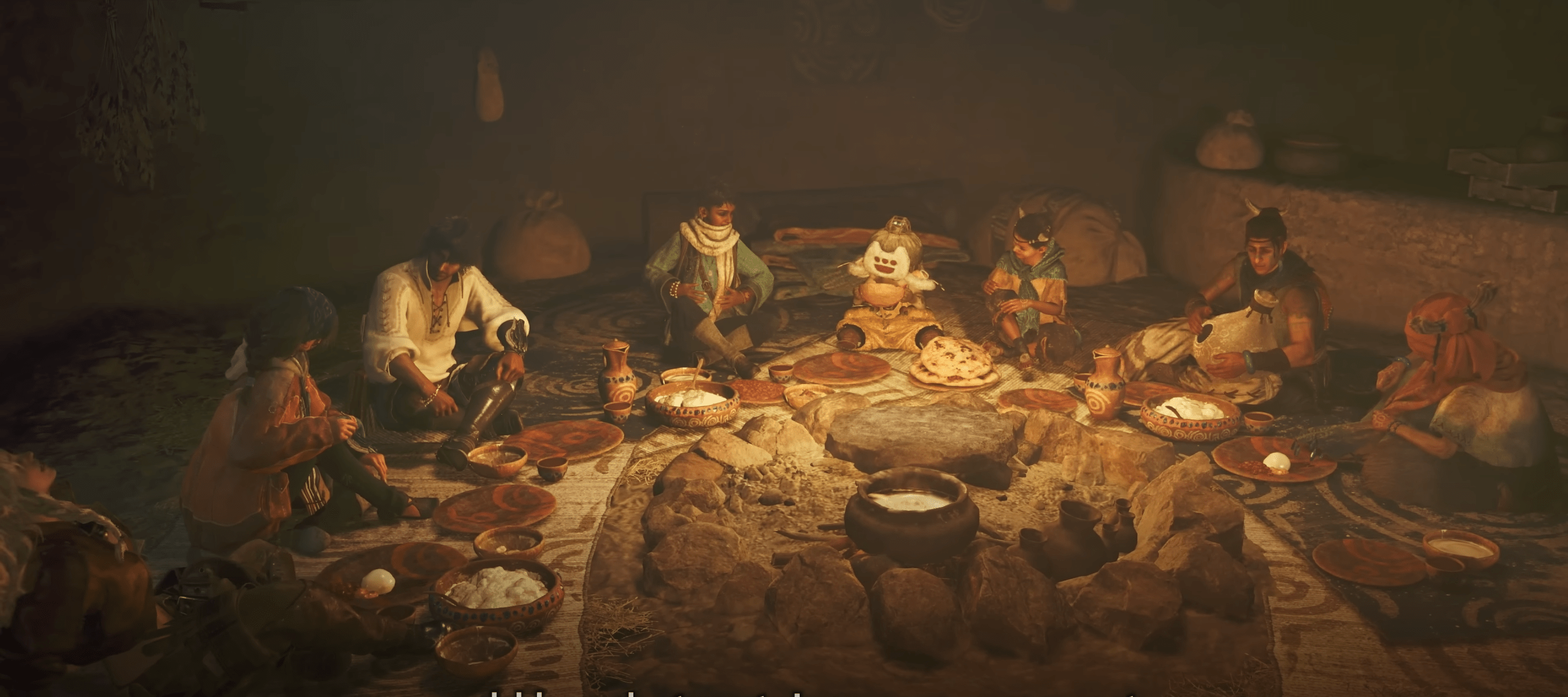
Even though previously we said that cooking can be done either in camps or by using a portable BBQ grill, there’s actually a third method.
Village Feasts – Long-Lasting Buffs & Regional Specialties
Monster Hunter Wilds village feasts are sit-down meals provided by settlements you visit throughout the game. These meals:
- Offer powerful buffs that last significantly longer than field-cooked meals.
- Change based on location, meaning each village has its own unique dishes.
- Improve over time, as deeper relationships with locals lead to better food options.
Village Feasts are ideal before major hunts, as they provide the best possible meal effects. However, since they’re only available in settlements, they aren’t always accessible when you’re in the wild.
Field Cooking – Quick Buffs, Anywhere & Anytime
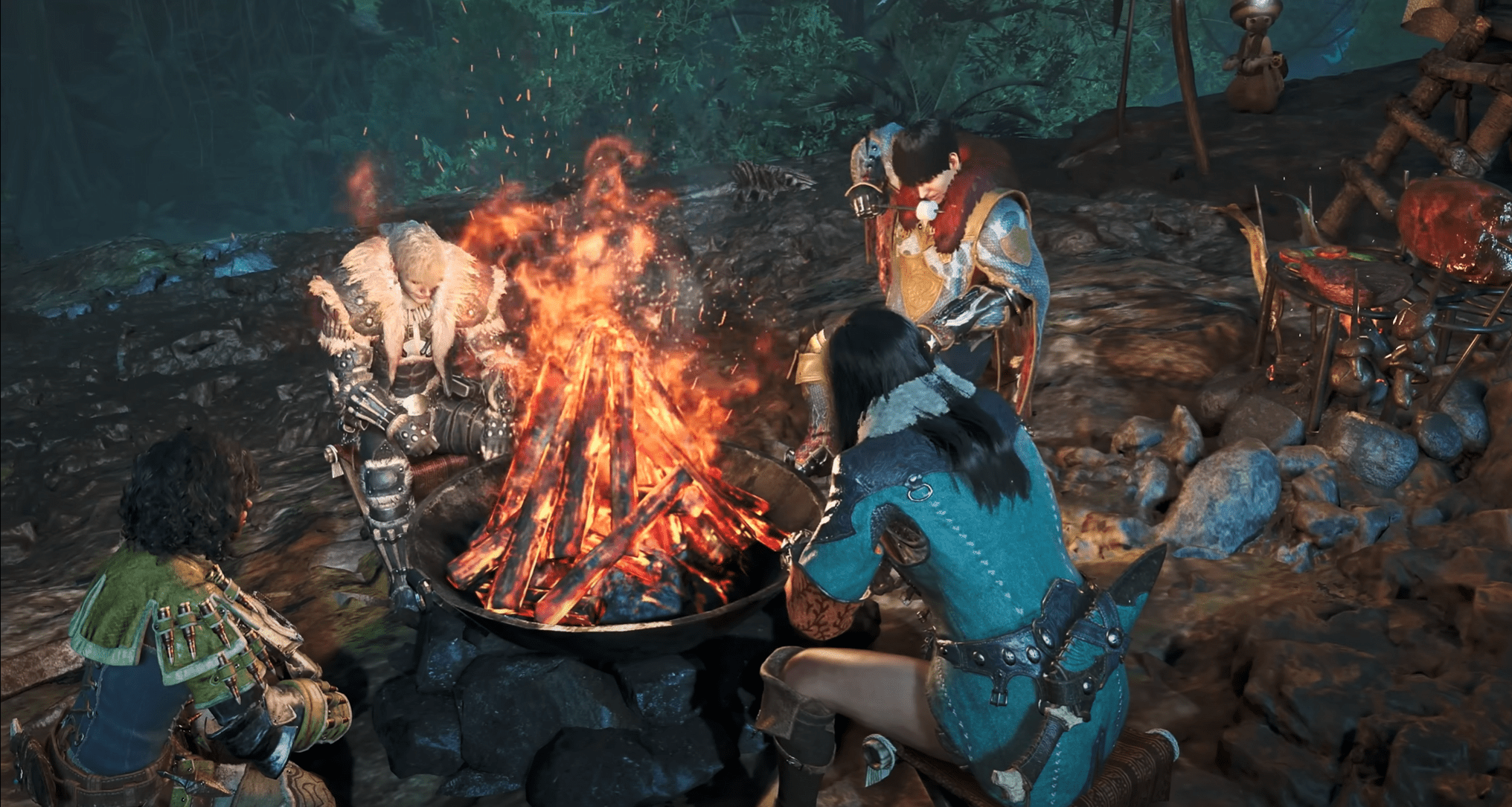
Field Cooking, done via the Monster Hunter Wilds BBQ Grill, is useful for situations where returning to a village isn't practical. It:
- Can be done anywhere, so you always have access to buffs.
- Uses rations & additional ingredients to create custom meals with specific effects. BLOG20
- Has a time-based system, meaning buffs expire after a set duration.
Field Cooking is more flexible, making it useful for long hunting sessions where you won’t be returning to a village for a feast. So, which one should you use?
- Before a major hunt → Village Feast for stronger, longer-lasting buffs.
- During expeditions or extended hunts → Field Cooking to maintain buffs as needed.
- When low on stamina in the field → BBQ Grill steaks for quick recovery.
Balancing these two systems ensures that you’re always prepared, no matter where you are in Monster Hunter Wilds.
Monster Hunter Wilds Cooking Ingredients
In this section, I thought it would be a good idea to make a list of all Monster Hunter Wilds cooking ingredients and their effects when used for a meal.
For now, this list is limited by the content of the Open Beta, but it will be expanded significantly after the game’s release. Let’s start with Rations.
| Name | Meal Effect |
| Meat |
|
| Fish |
|
| Veggies |
|
Once again, Rations increase the raw stats of your character, much like armor. You just pick whichever bonus you want – higher attack, higher Defense, or extra Elemental Resistance.
Additional Ingredients add Food Skills – provide bonuses to your hunter or your Palico.
| Name | Food Skill | Food Skill Description |
| Droolshroom | Black Belt Meal (Lo) | Reduces stamina depletion when performing stamina-draining moves such as evading, etc. |
| Mud Shrimp | Tumbler Meal (Lo) | Slightly extends the invulnerability period when evading. |
Additional Ingredients also increase the duration of Monster Hunter Wilds meal effects from Rations by 20 minutes!
Finishing Touches seem to have both Meal Effects and more Food Skills. From the beta, all Finishing Touches ingredients provided +5 Elemental Resistance.
| Name | Food Skill | Food Skill Description |
|
Wild Herb |
Immunizer Meal | Lessens the effects of a variety of ailments. |
| Eastern Honey | Medic Meal | Increases the amount of health recovered when healing. |
| Monster Chili | Sizzling Meal | Negates the effects of hot or cold climates and increases defense while in such areas. |
One more thing about Food Skills. In previous Monster Hunter Games, there were 3 levels of Food Skills Effectiveness: S – small, M – medium, L – large. Basically, L means that you got the biggest bonus. Judging by the “(Lo)” in the name of some Food Skills, it’s safe to say that this system has been carried over into MH: Wilds, and “Lo” means “low” or the smallest possible effect from the skill. To increase the potency of food skills, you’d use more ingredients with the same Food Skill.
Conclusion
Cooking in Monster Hunter Wilds is an essential part of preparing for the challenges ahead. Whether you’re crafting meals for long-lasting buffs or grilling meat to sustain stamina, taking advantage of the cooking system ensures you’re always at your best before a hunt. With a variety of ingredients, effects, and cooking methods available, learning how to use them efficiently can make a real difference in survival and success. No matter where your hunt takes you, a well-fed hunter is always a step ahead.
F.A.Q.
How to cook in Monster Hunter Wilds
To cook a meal, you need to combine 3 ingredients:
- Rations
- Additional Ingredients
- Finishing Touches
Each element of a meal provides its own effects, bonuses, or Food Skills
Is cooking important in Monster Hunter Wilds?
Cooking lets you get additional bonuses like increased health and stamina or Food Skills that make hunting large monsters much easier.
How to do the cooking mini-game in Monster Hunter Wilds?
To complete the steak grilling mini-game perfectly, you first need to watch the meat stop grilling before it turns black. The second step is to hit the button 5 times at the same pace as the melody. When done correctly, you’ll hear the word “tasty”!



